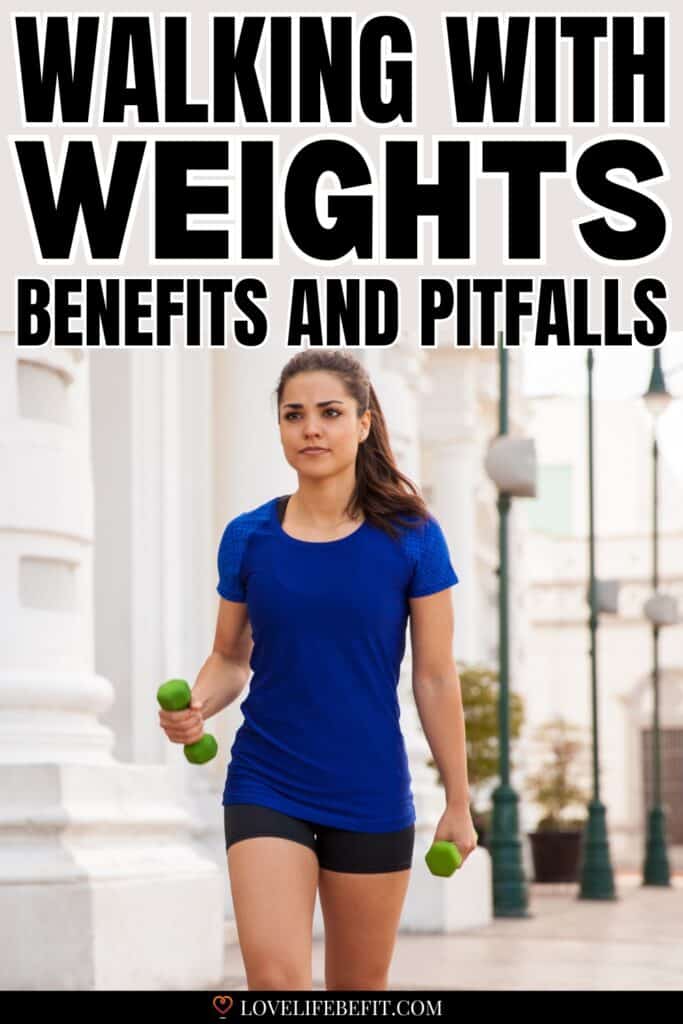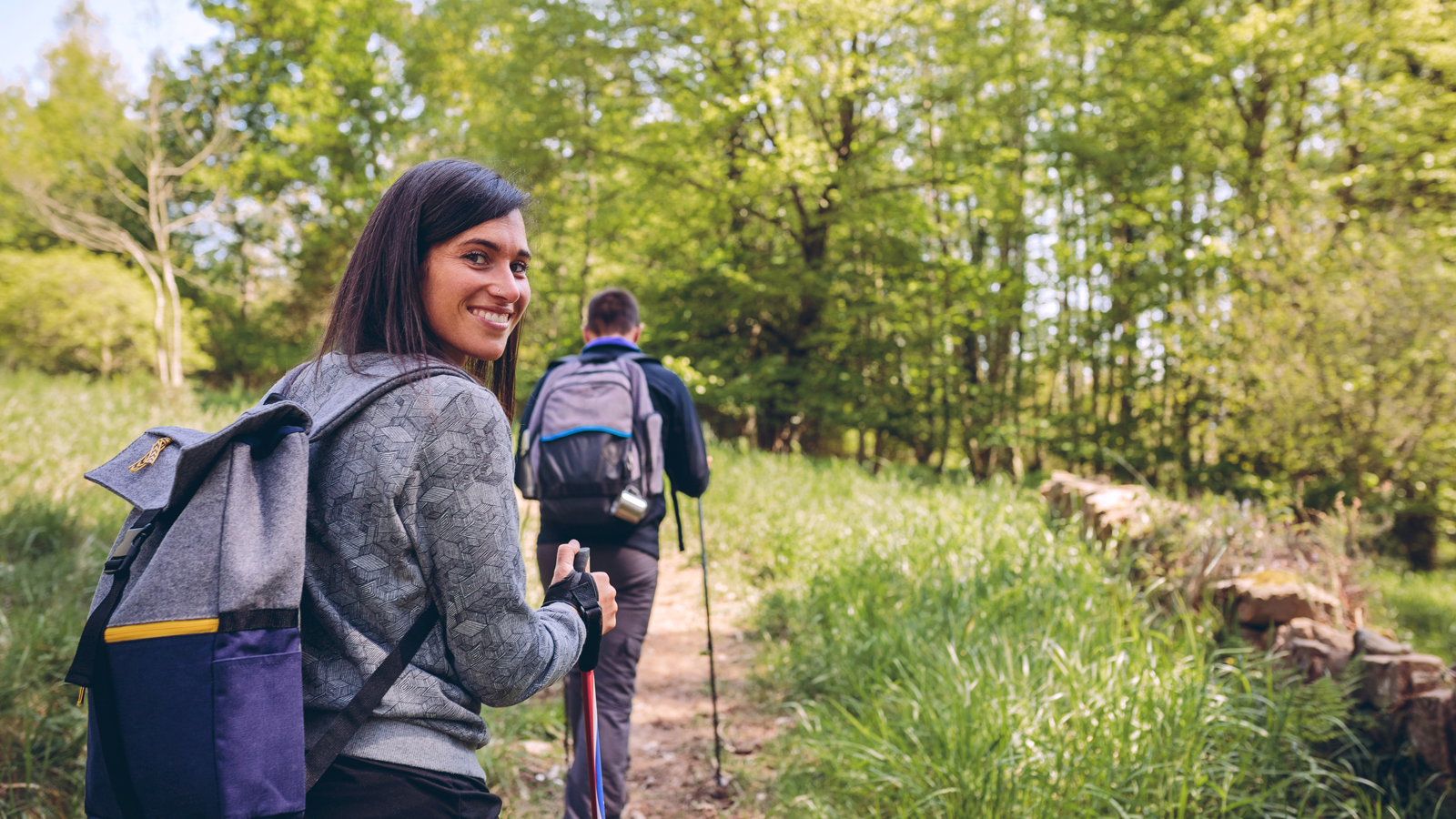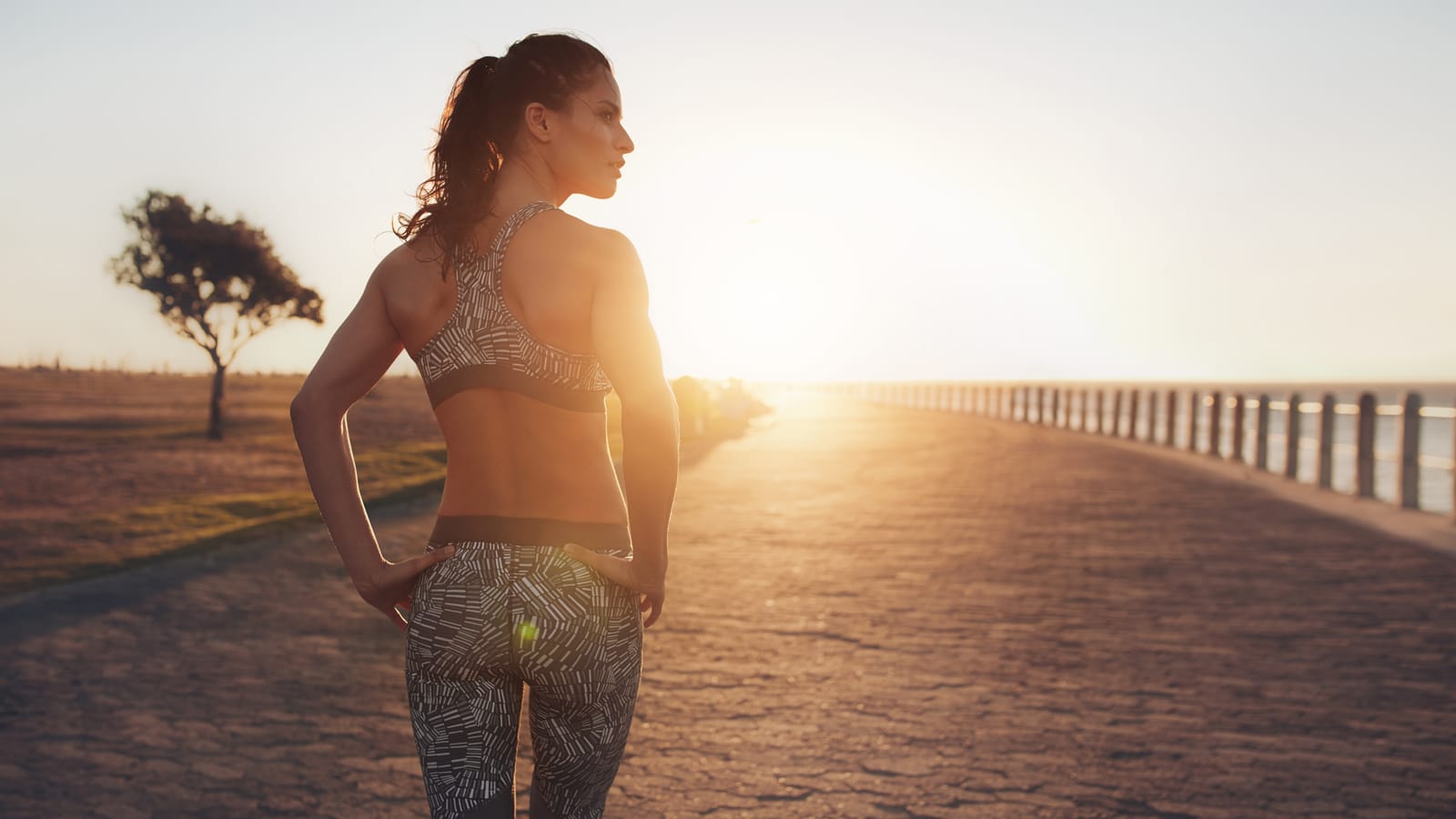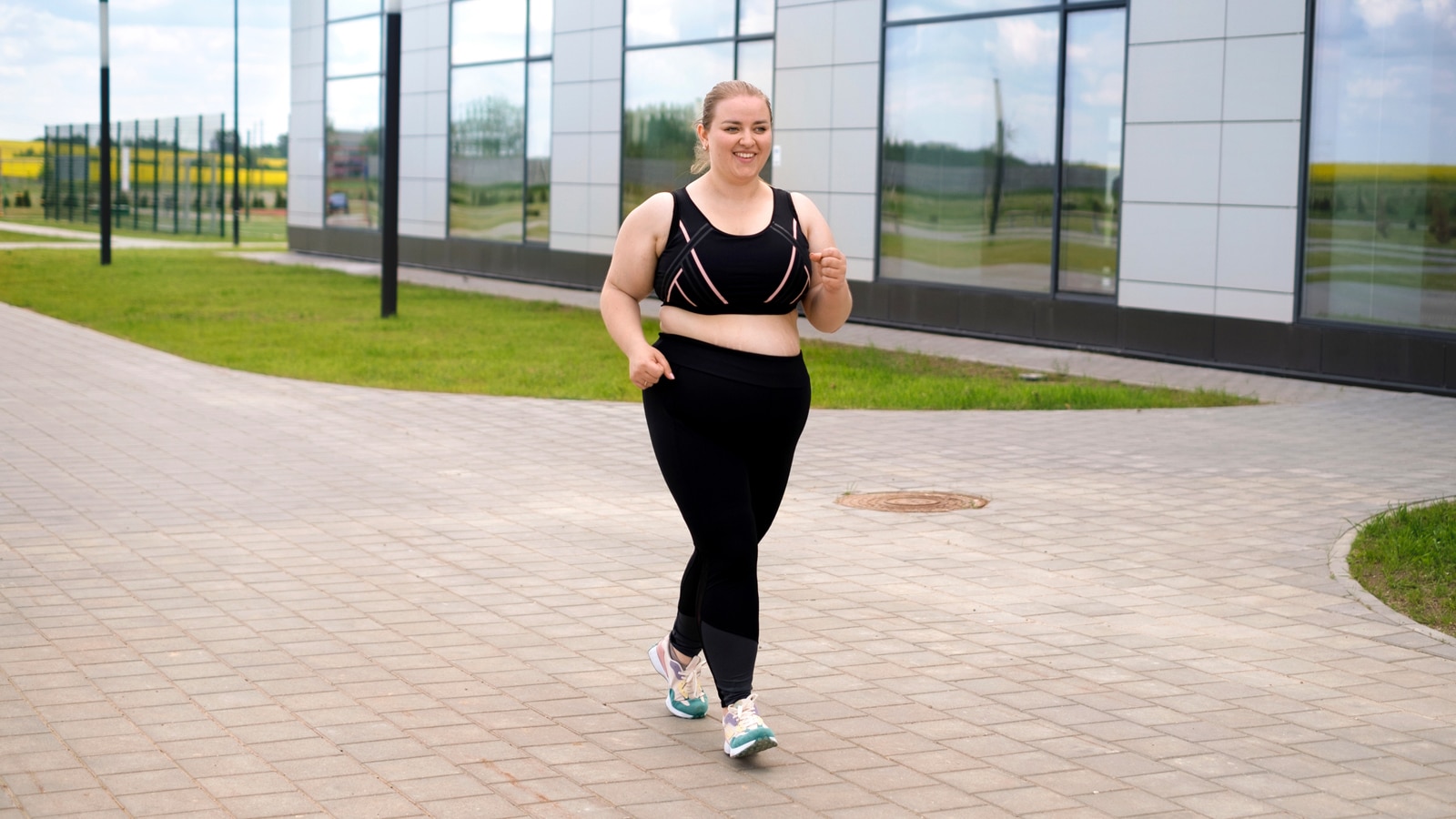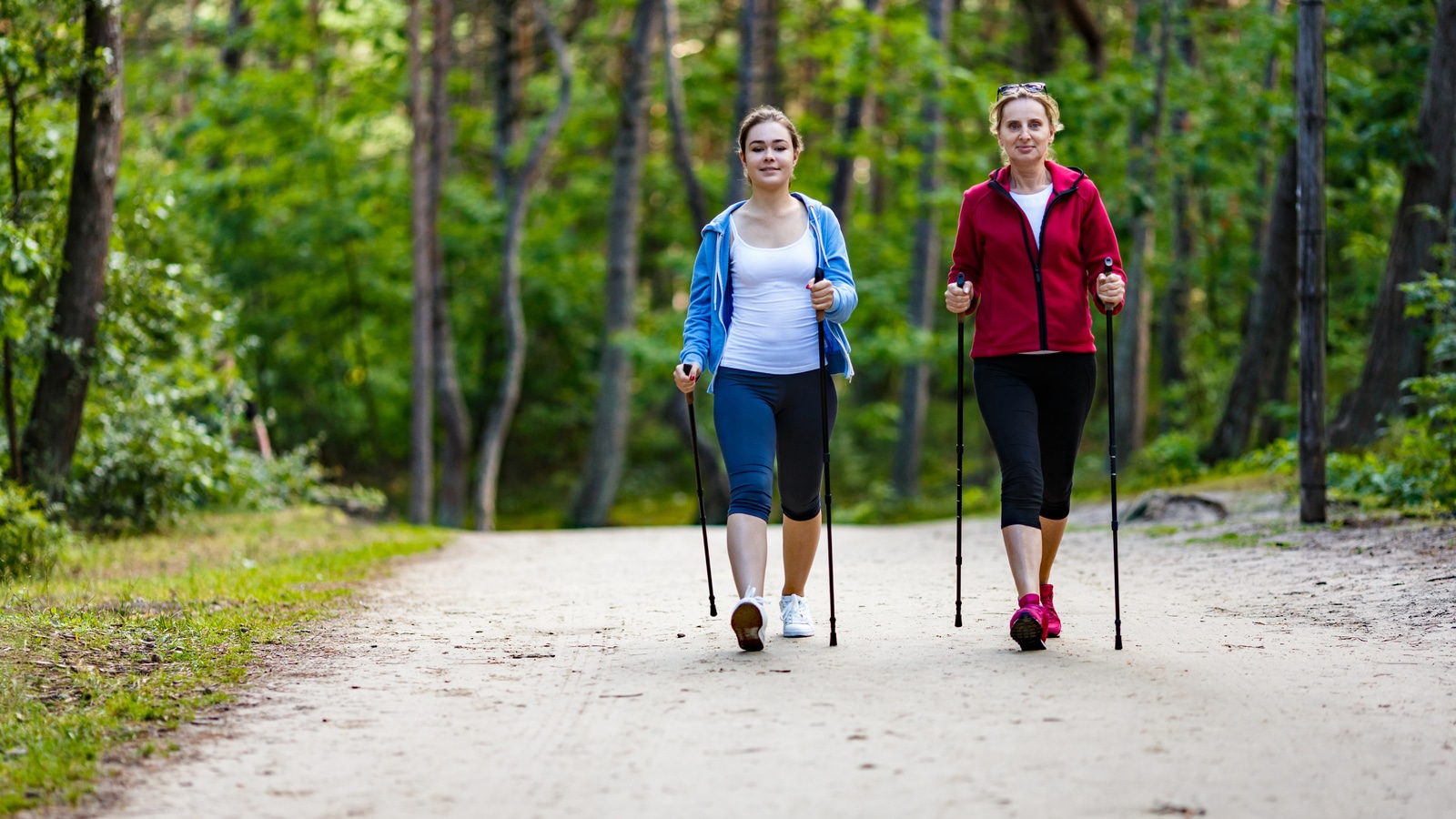Walking With Weights: Workout Benefits And Safety Tips
Maybe the craze never went away, but I’m increasingly seeing people walking with weights – especially hand weights. Is it just a throwback to the 80s or is walking with weights a good idea?
Walking is a great way to exercise. It’s accessible to almost everyone and all you need to get started is a good pair of walking shoes. Brisk walking will elevate your heart rate and give you a good cardio workout. Plus regular walks are associated with a long list of health benefits such as helping to reduce high blood pressure, protecting against heart disease, improving bone density, and reducing anxiety.
But should you add weight to your walking routine? Is it safe and what’s the best way to go about it?
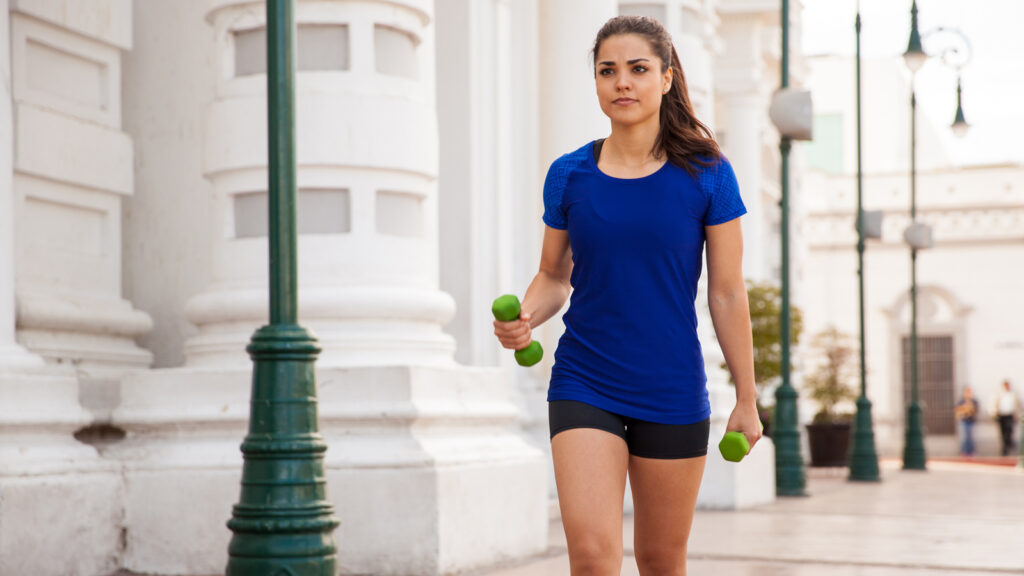
Why Walk With Weights?
Walking with weights took off in the 80s on the back of Dr Leonald Schwartz’s Heavy Hands program. Schwartz was an unfit medical doctor trying to get in shape in his fifties. Researching the VO2 maximums of athletes, he realized the fittest athletes with the highest VO2 max weren’t endurance runners but cross-country skiers.
Why? Because skiers were using both their arms and their legs – all four limbs to propel themselves forward. Runners had an easier time just using their legs.
Schwartz began experimenting with pumping light dumbbells while walking to mimic the action of skiers. The results were encouraging. Pumping hand weights makes you work harder. It’s a similar effort to walking with poles – termed Nordic Walking.
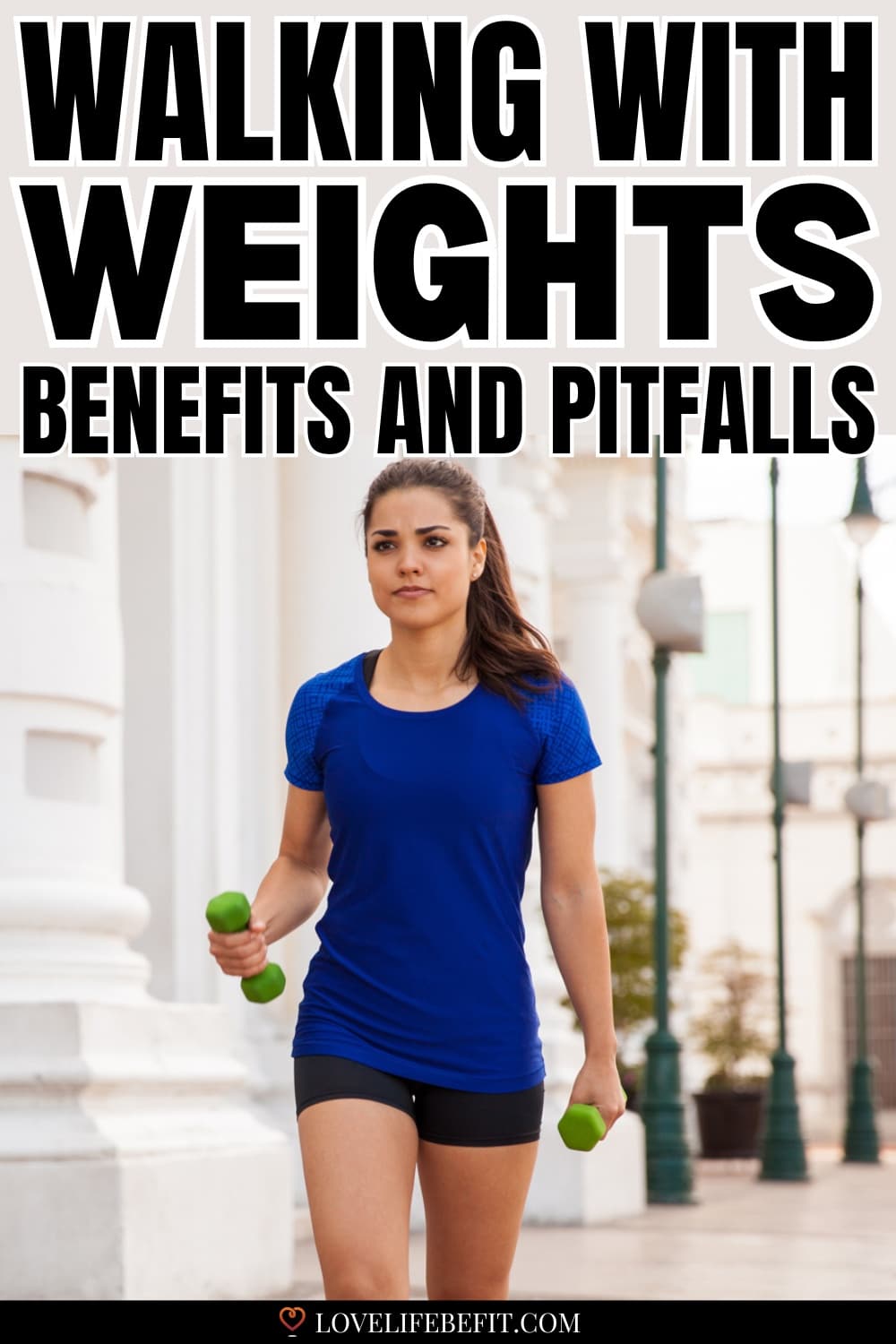
Rucking
Walking with weights isn’t just about dumbbells. Rucking is a staple of military training and has often been borrowed by mountaineers getting fit to climb high peaks.
Rucking is simply walking or hiking with a weighted rucksack or backpack. It’s training for carrying heavy loads over long distances.
Some people ruck with a weighted vest and others use a backpack loaded with containers of sand, gravel, or water for additional weight.
Does Walking With Weights Improve Your Fitness?
Walking with weights is about making the exercise harder – increasing intensity to improve VO2 max (the maximum rate of oxygen your body can use during exercise). More intense exercise burns more calories and carrying weights can help to build strength.
This doesn’t mean it’s always a good idea to walk with weights. Hand or ankle weights can affect your walking form and a weight vest or heavy pack puts a lot of force on your back, shoulders, and lower limbs. The extra weight is a significant injury risk – particularly knee pain if you’re carrying heavy weights downhill.
Benefits Of Walking With Weights
These are the main ways you can benefit from walking with weights:
1. Improved Fitness
A walking workout using weights will make you work harder. It can be an intense exercise session that’s just as effective as running.
A big advantage is that using light weights for walking is a lower impact activity than running – so you’re benefiting from a great workout with less risk of injury.
2. Increased Calorie Burn
The more intense the activity, the greater the calorie burn! If you’re walking for weight loss adding weights to your workout can help to burn calories.
3. Works The Upper Body
Walking will typically build strong leg muscles but neglects the upper body. Using hand or wrist weights is a way of toning your arms and shoulders while you’re walking.
4. Strength Training
Using weighted vests or carrying heavy packs is a great way to build strength and toughen up the body. I’ve carried heavy weights frequently on backpacking trips and felt a lot stronger by the end of the trek.
Provided you’re sensible about carrying the added weight, it’s a good way to build up your core muscles and improve lower body strength.
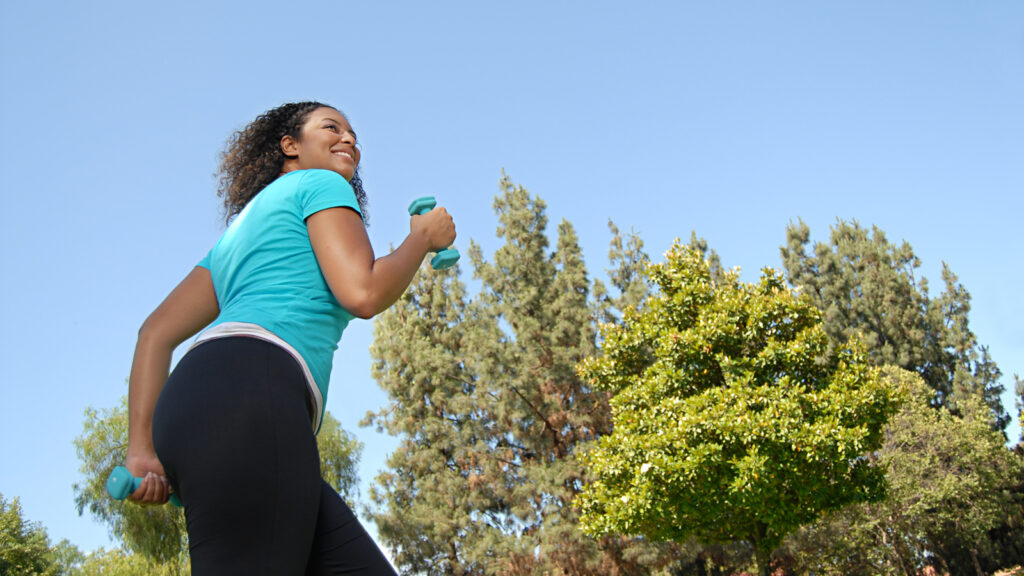
Does Walking With Weights Build Muscle?
You won’t build big muscles walking with weights. Carrying or wearing weights can strengthen and tone your muscles but walking is primarily an aerobic activity.
You need to lift heavier weights and eat a diet of protein-rich foods if you want to build muscle mass. Walking with weights doesn’t replace weight training in the gym.
Will Walking with Weights Burn More Calories?
Walking with weights is more intense so you’ll burn more calories per minute. However, if you’re just carrying light dumbbells with your arms at your sides, the increase in burn won’t be significant. You need to be working those arms to make a difference.
Walking with a weighted vest can make you work harder, but for the best workout, try carrying the extra weight uphill.
If you’re walking for weight loss, wearable weights can be a good way to keep your workouts challenging provided you use the weights with caution. Too much weight or using weights too frequently will make you over-tired, risk injury, and do more harm than good.
Different Ways To Walk With Weights
There are several different ways to use weights in your exercise program.
1. Weighted Vest
A weighted vest is the most popular way of using weights when walking. It’s typically an adjustable vest where you can vary the amount of weight depending on your fitness level or the nature of your workout.
The weighted vest fits snugly to your body and distributes the weight evenly, making it better for your back and shoulders and walking form than a regular backpack.
Of course, if you’re out hiking, a backpack is much more versatile – you can add some extra weight using filled water bottles alongside your regular hiking gear. Empty the water before you descend and your knees will thank you!
Using a weighted vest increases your body weight making your workout harder. It’s good for leg and core strength but doesn’t work your arm muscles.
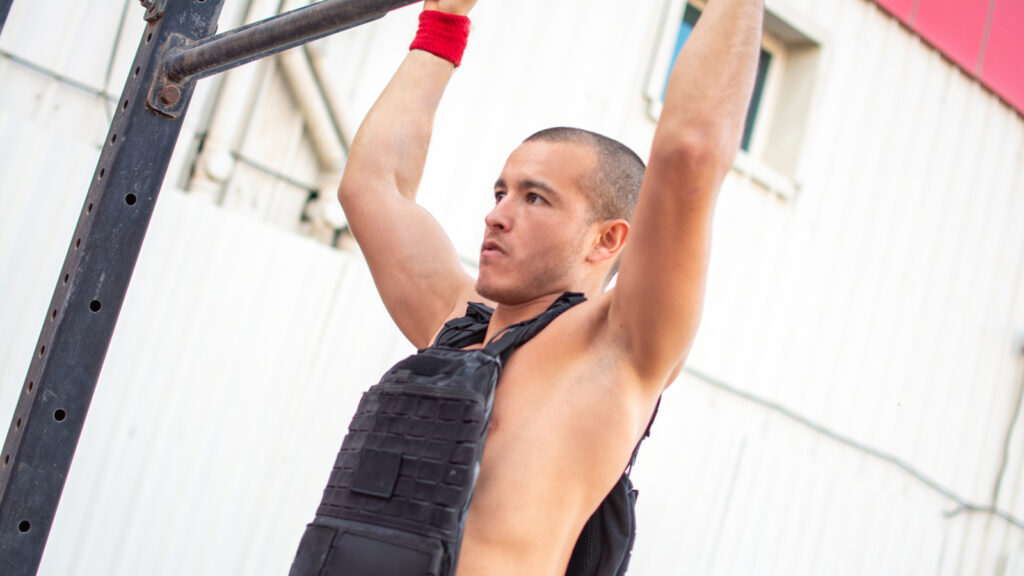
2. Wrist Weights
If you want to work your arm and shoulder muscles, then wrist weights are a good option. They’re normally lightweights but if you pump your arms as you start walking you’ll quickly notice the increase in intensity.
Wrist weights are normally adjustable. Start with lighter weights and gradually increase the weight you use as you get fitter and stronger.
3. Dumbbells
Using dumbbells is similar to using wrist weights – the extra workout comes from pumping your arms.
Gripping hand weights can strain neck muscles and affect your walking form. Stick to lighter weights and keep your workouts short. It’s best to use dumbbells with a strap so you don’t need to grip them so tightly.
4. Ankle Weights
We strongly advise against using ankle weights. The ankle joint is an unnatural place to carry extra weight. Ankle weights pull on your hips, knees, and lower limbs potentially causing injury.
5. Body Weight
Weighted vests are unnecessary if you’re already carrying a lot of excess body weight. Your walking workout will be tough enough without adding weights to make it harder.
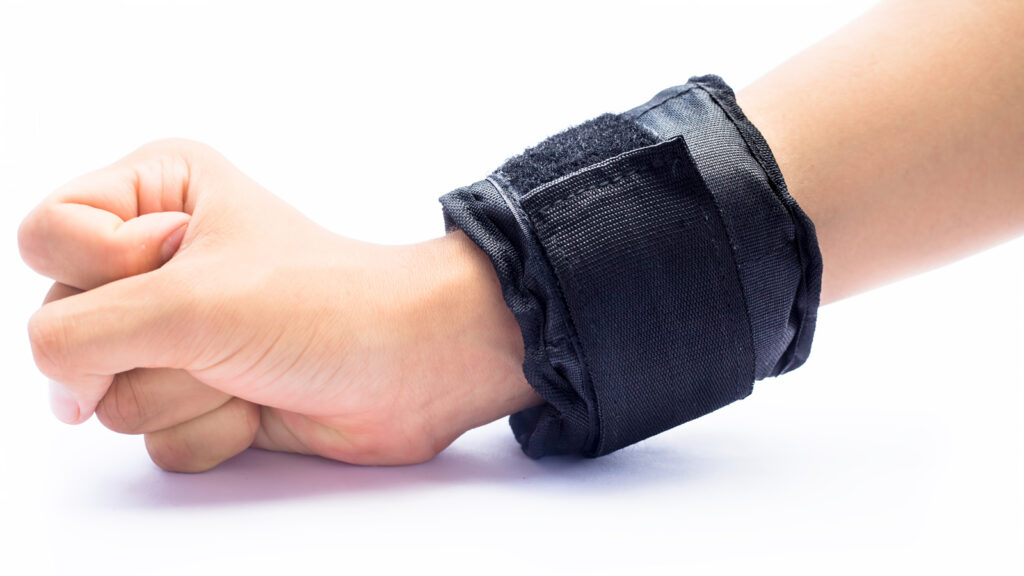
How To Safely Walk With Weights
It’s so easy to get carried away using weights. Remember less is more with any new exercise program. Follow these tips to stay safe:
1. Don’t Use Weights Every Day
Your workouts with weights need to be short and you need time to recover between sessions. Just 2 or 3 times a week is enough for using wearable weights or dumbbells. Fit sessions in around your regular walking.
2. Start With Light Weights
You can always add more weight the next time you go out. Start with light weights and build the weight you’re using gradually.
If you’re using dumbbells you want to pump those arms – so keep the weight light and manageable.
3. Keep The Distances Short
Don’t overdo it and wake up the next morning unable to move. And definitely don’t get stuck miles from home worn out and demoralized. Those light weights at the start of your session will feel much heavier halfway around your route!
4. Use Good Walking Form
Never let the weights compromise good form. Focus on correct posture with an upright torso. Keep looking forward and swing your arms. Your arms should be bent, and your shoulders relaxed and down – not up around your ears!
5. Choose The Right Gear
Avoid using ankle weights as the injury risk outweighs any benefit. Choose adjustable weight belts or wrist weights where you can add extra weight if necessary rather than be tempted to start out with too much.
Thoughts From Love Life Be Fit
Before you rush out and buy a set of hand weights, start your fitness program first. Walking with weights is a good way to increase effort level and intensity to keep your workouts challenging.
If you’re new to walking or looking for ways to improve, take a look at my walking guides and tips to hit your fitness goals.
